new posts in all blogs
Viewing: Blog Posts Tagged with: Self improvement, Most Recent at Top [Help]
Results 1 - 25 of 65
How to use this Page
You are viewing the most recent posts tagged with the words: Self improvement in the JacketFlap blog reader. What is a tag? Think of a tag as a keyword or category label. Tags can both help you find posts on JacketFlap.com as well as provide an easy way for you to "remember" and classify posts for later recall. Try adding a tag yourself by clicking "Add a tag" below a post's header. Scroll down through the list of Recent Posts in the left column and click on a post title that sounds interesting. You can view all posts from a specific blog by clicking the Blog name in the right column, or you can click a 'More Posts from this Blog' link in any individual post.
 It all started with a bowlful of marbles.
It all started with a bowlful of marbles.
For years I wrote for many of the major women’s and health magazines — Woman’s Day, Health, Family Circle, Oxygen, Fitness, Woman’s Health, Redbook, and more. And part of my job was to always be researching my markets, so I read a LOT of these magazines every week.
It seemed that every year, each magazine in this niche would run an article on foot health where a podiatrist would recommend several exercises readers should do to keep their feet in good shape. One of these exercises was to toss a handful of marbles on the floor, and use your toes to pick up each one and deposit it in a bowl.
And every time I read this, I asked myself, “Is there a single woman, anywhere in the universe, who actually does this? In a country where the vast majority of women don’t even get the minimum recommended amount of regular exercise, is anyone out there taking the time every day to work on their toe strength?” It baffled me.
This next section may seem like a non-sequitur, but what I’m going to talk about now ties into all this and there is a lesson, I promise.
The Comparison Game
Even though I’m not a perfectionist when it comes to the craft and business of writing, I’m a perfectionist when it comes to just about every other part of my life. I like my house to be beautifully designed and sparkling clean, I stress when my toenails are chipped, I insist that every meal my family eats be as organic as possible and has all the macronutrients in the right amounts, and until my recent back injury, I was hiring a personal trainer to work me out three times per week — and feeling bad that my belly looked, well, like that of a 46-year-old woman.
You know how we tend to compare ourselves to others? Well, in each area of my life I’ve always compared myself to the foremost person I know in that field.
- I compared my house to the home of my friend who’s a very successful interior designer.
- I compared my energy and fitness to the full-time personal trainers I’ve hired.
- How did my eating stack up to the diet of that woman who runs a blog about the evils of processed food? This mom uses a special app while on road trips to find breakfast spots that offer organic, free-range eggs. What would she think, I asked myself, if she saw me pick up $1/dozen eggs at Target?
- Our son’s lunches needed to look like the ones featured on healthy mom blogs. (Oh damn, did she MAKE those whole wheat tortillas?)
- How did my last e-course launch compare to the marketing genius with 15 employees who broke $1 million on his last launch? Ugh.
Comparing upwards was a recipe for dissatisfaction and stress, but it was so hard to stop. Can you relate?
And Then It All Falls Apart
My back went out in July, and after getting a lumbar steroid injection a week ago, the pain reached a horrifying peak (ironically…aren’t those injections supposed to alleviate pain?). I ended up on the sofa for several days, being waited on hand and foot by my husband, our son, and our exchange student.
I couldn’t cook. I couldn’t exercise. I couldn’t clean. I couldn’t even work that well because it was difficult to balance the laptop on my knees as I sat in the one position that didn’t cause agony.
I’ve been grateful for all the help I’ve been receiving, and didn’t want to criticize how anyone did anything for me. Gift horse and all that.
But guess what?
My husband gave our son an apple for breakfast before his dance class — yes, just an apple, before a strenuous hour of ballet — and the universe did not implode.
It took me a couple of days to get back to a client who couldn’t download the materials she bought from me. She was fine with it.
We had family over for my birthday and bought pizza and cake instead of my stressing over a homemade dinner and dessert all day as usual. Everyone had a great time.
I spent half a day surrounded by dirty plates and glasses because my husband got overloaded with to-dos. I survived and so did everyone else.
And that’s when I had my “ah ha” moment:
The Experts Picked Their Battles
The experts we compare ourselves to have devoted their lives to being the best in that one area.
- The podiatrist offers magazine readers toe exercises and probably even does them at home because foot health is his entire life. He may eat fast food every day and live in a messy house, but damn, his feet are in great shape.
- The famous author who pumps out a bestseller every year — I guarantee she is not on top of her laundry and she probably doesn’t take a shower the entire week before a deadline.
- The mom who runs a blog that features beautifully styled photos of her kids’ hyper-healthy, homemade bento box lunches — creating those lunches is what she does for a living. We don’t know about the rest of her life. Hell, maybe her marriage is falling apart and her kids are entitled brats. But all we see is the thing she’s perfect at, and we extrapolate that to the rest of her life.
- Personal trainers’ lives revolve around fitness. They run daily and have their split routine down to a science, and that’s what we notice when they train us. We see the thing they’re best at and assume they’re perfect in all aspects of their lives as well. But look a little closer and we see that maybe they’re poor marketers or get behind on their bills occasionally.
I’m not trying to be all Schadenfreude here. I’m not saying we should pick apart experts’ flaws to make ourselves feel better. What I’m trying to get across is that the experts chose one area of their lives to truly shine in, and that’s really all we can expect of anyone else — or ourselves.
Now, Pick YOUR Battles
We see these experts in our lives, and they seem to have it all together and be perfect at the one thing they do, and we aspire to be the same.
But the thing is, despite what magazines and Internet gurus would have us believe, we can’t emulate every professional and expect to retain our sanity. We can’t feel guilty that we’re not doing daily toe exercises and writing bestsellers and crafting bento box lunches and taking our kids on weekly educational field trips and walking around with perfectly coiffed hair and rock solid abs and measuring the macronutrients in our food.
Pick your battles. What is the one thing you do — or want to do — better than anyone else?
Maybe you’re a brilliant writer or entrepreneur. Or you’re a devoted homeschooling parent. Or you always look put-together and beautiful. Or you’re a wonderful host, and your home is a place friends and family love to gather. Or you work hard to rock six-pack abs and upper arms that don’t jiggle when you wave.
Don’t hang your self worth on having it all going on in every aspect of your life — let your self-esteem stem from your own personal superpower.
I’m not saying you can’t be a good parent and a good writer, or you have to let your health go to pot if you want to have a beautiful home. Self improvement is always great, and as humans we’re always striving for better and more. But realize you can’t do it all perfectly, and no one expecting you to. (And if someone is, you probably don’t want them in your life.)
You won’t see any bowls of marbles in my closet. My top skill is writing, so that’s what I’ll focus on. Take a few minutes to think about this today: What’s your superpower, and what do you need to let go of so you can shine?
**
If you enjoyed this post, you’ll love my new e-book Commit: How to Blast Through Problems & Reach Your Goals Through Massive Action. Committing is using overwhelming force to solve a problem or reach a goal. It’s pretty much the opposite of the baby-steps approach. When you Commit, you do whatever it takes to make happen what you want to happen. You can use one giant, crazy, unbelievably powerful tactic, but it’s even more effective to combine several tactics at the same time — which we discuss in this self help e-book.
In Commit, we talk about hiring help, creating accountability, and amassing the resources you need to get off to a mighty start. In this concise and actionable personal development e-book, you’ll also find details on how to prepare for your Commit practice…how to troubleshoot common problems…and 20 ideas for reaching your goal or solving your problem through massive action.
Interested? Check out the 22 five-star reviews and get your copy on Amazon.com here!

Author: Ray Arata
Publisher: Highpoint Executive Publishing
Genre: Men / Self-improvement
ISBN: 978-0-9839432-6-6
Pages: 260
Price: $21.99
Author’s website
Buy it at Amazon
Ray Arata’s wake-up call came when he was suddenly faced with a huge change at work and the end of his marriage. Although his circumstances had become unstable, he knew he needed to make adjustments to how he handled things, if he wanted to be happy. Wake Up, Man Up, Step Up shares some of the processes he went through to turn his life around.
Once a man has had his wake-up call, he will need to take action. In this book, Arata provides a roadmap of steps to success: create support for yourself, speak your truth, declare your want, identify blocks, break through old ways of being, embody responsibility, and integrate and manifest. These steps are explored with examples, explanations and journal entry questions, designed to help the reader get more in touch with himself and his underlying beliefs. Follow-up chapters help men focus on specific areas such as being a good parent, friend or spouse.
Wake Up, Man Up, Step Up is not a book men can simply read to absorb and understand the concepts presented. This is an interactive workbook, and the exercises won’t be effective without putting in the time and energy to get to the root of problems. But if you’re willing to make the commitment, this program will lead you to be the best man you can be.
Reviewer: Alice Berger



By: Elizabeth Gorney,
on 7/24/2014
Blog:
OUPblog
(
Login to Add to MyJacketFlap)
JacketFlap tags:
Books,
self improvement,
cigarettes,
cigarette,
self-help,
addiction,
habits,
Jonathan Miller,
*Featured,
Science & Medicine,
Psychology & Neuroscience,
self control,
Howard Rachlin,
self monitoring,
The Escape of the Mind,
rachlin,
publicdomainpictures,
petr,
cavett,
kratochvil,
smoked,
Add a tag
By Howard Rachlin
‘I know these will kill me, I’m just not convinced that this particular one will kill me.’
–Jonathan Miller to Dick Cavett on his lit cigarette, backstage at the 92nd Street Y in New York
Jonathan Miller’s problem is actually a practical form of the central problem of ancient Greek philosophy (a problem that continues to haunt philosophy up to the present day): the essential relationship between the abstract and the particular. Miller is right. No particular cigarette can harm a person, either now or later. Only what is essentially an abstraction (the relationship between rate of smoking and health) will harm him. Can it be that Miller is just not a very smart person incapable of understanding abstractions? No way. He is a “public intellectual,” a British theater and opera director, actor, author, humorist, and sculptor. And on top of that a medical doctor.
No matter how smart we are, we all tend to focus on the particular when it comes to our own behavior. Only when we observe someone else’s behavior or when circumstances compel us to experience the long-term consequences of our own behavior, are we able to feel their force.
How then can we use our brains to bring our behavior under the control of its wider consequences? First, and most obviously, to control our behavior we have to know what exactly that behavior is. That is, we must make ourselves experts on our own behavior. It is this step – self-monitoring – that is by far the most difficult part of self-control. Modern technology can make self-monitoring easier, but I myself prefer to just write things down. At points in my life where I need to control my weight I keep a calorie diary in which I write down everything I eat, its caloric content, and the sum of the calories I eat each day. Then I make summaries each week. If I were trying to control my smoking I would record each cigarette and the time of day I smoked it – or, each glass of scotch, each heroin injection, each cocaine snort, each hour spent watching television or doing crossword puzzles when I should be writing, etc. Every instance goes down in the book. There is no denying it – this is hard to do. For one thing, it is socially difficult. You don’t want to interrupt a dinner party by running into the bathroom every five minutes to write down that you’ve bitten your nails again. This is one reason it’s good to be married (I’m serious). Your spouse (whose objective view is necessarily better than your own subjective view) will remember until you get home. Or you can (and should) train yourself to remember over short periods.
You may say that by recording your behavior you are constricting your freedom, but in this regard it is good to remember the poet Valerie’s advice: “Be light like a bird and not like a feather.”
This first step – self-monitoring – is so important, and so difficult, that it should not be mixed up with actual efforts at habit change. First make yourself an expert on yourself. Make charts; make graphs, if that comes naturally. But at least write everything down and make weekly and monthly summaries. Sometimes this step alone, without further effort, will effect habit change. But do not at this point try in any way to change whatever habit you are trying to control. Once you become an expert on yourself, you will be 90% there. The rest is all downhill.
After you have gained self-observational skill, you are ready to proceed to the second step. For example, Jonathan Miller’s problem is that, so to speak, each particular cigarette weighs too little. How could he have given it more weight? Let us say that Miller has already completed Step 1 and is recording each cigarette smoked and the time it was smoked. (Note that this already gives the cigarette weight. It doesn’t just go up in smoke but is preserved in his log.) Let us say further that the day of his encounter with Cavett was a Monday. On that day Miller smokes as much as he wants to. He makes no effort to restrict his smoking in any way. (He is still recording each instance.) However, on Tuesday he must force himself to smoke exactly the same number of cigarettes as he did on Monday. If necessary he must sit up an extra hour on Tuesday to smoke those 2 or 3 cigarettes to make up the total. Then on Wednesday he is free again, and on Thursday he has to mimic Wednesday’s total. Now, when he lights a cigarette on Monday he is in effect lighting up two cigarettes – one for Monday, and one for Tuesday. As he keeps to this schedule, and organizes his behavior into 2-day patterns, it should be coming under control of the wider contingencies. Once this pattern is firmly established, he can extend the pattern to three days, duplicating his Monday smoking on Tuesday and Wednesday, then Tuesday, Wednesday and Thursday, etc., always continuing to record his behavior. Eventually, each cigarette he lights up on Monday will effectively be 7 cigarettes – one for each day of the week. The weight of each cigarette will thus increase to the point where he no longer can say, “I’m not convinced that this particular cigarette will kill me.”
At no point is he trying to reduce his smoking or exerting his willpower. Willpower is not a muscle inside the head that can be exerted. It is bringing behavior under the control of wider (and more abstract) contingencies. This is a power that anyone can do who has the intelligence and is willing to invest the effort and time. And the exercise of this power can make a smart person happy.
Note: There is yet a third step – or rather a flight of steps. I have not mentioned social support. I have not mentioned exercise. Both of these are economic substitutes for addictions of various kinds. If either is lacking in an addict’s life, programs need to be established for its institution. I am assuming that we’re talking about the happiness of someone who already has an active social life, who already is as physically active as conditions allow. Addiction is not an isolated thing. It has to be regarded in the context of a complete life.
Howard Rachlin was trained as an engineer at Cooper Union and as a psychologist at The New School University and Harvard University. He has taught at Harvard University and at Stony Brook University. His current research, supported by the National Institute on Drug Abuse, lies in the development of methods for fostering human self-control and social cooperation. He is the author of The Escape of the Mind.
Subscribe to the OUPblog via email or RSS.
Subscribe to only psychology articles on the OUPblog via email or RSS.
The post If you’re so smart, why aren’t you happy? appeared first on OUPblog.


By: Kenneth Kit Lamug,
on 3/13/2014
Blog:
RabbleBoy
(
Login to Add to MyJacketFlap)
JacketFlap tags:
creativity,
inspiration,
winning,
art,
self improvement,
champion,
win,
inspirational quotes,
just do it,
improve,
Void,
be inspired,
artist block,
be insired,
be motivated,
mental block,
Add a tag

By: Michelina Ouellette,
on 3/1/2014
Blog:
Michelle Can Draw
(
Login to Add to MyJacketFlap)
JacketFlap tags:
review,
artist,
illustration,
industry,
animation,
self improvement,
class,
disney,
character design,
connect,
online class,
ctnx,
james lopez,
virtual animators,
small class,
ctn,
Add a tag
Last fall I took a class with Virtual Animators (http://www.virtualanimators.com/) taught by James Lopez. I’ve had quite a few questions from the internets about what I thought, so I thought I’d write a note about my experience.
About the class: Character Design with Disney Artist & Animator James Lopez is a 12 week course taught online. See his IMDB here or amazing work here. The class is viewed through Adobe connect once per week for 12 (12!) weeks. You log in and the VA team, James and your classmates are online. You can ask questions via a chat box, and the VA team does a great job keeping track of the chat and bringing questions to James. The class is not structured, giving James the freedom to teach the class to the group’s skill level. You are also invited to send it work weekly to have it reviewed by James online.
What I thought:
1. The cost: usually where I’d start when considering a class. I didn’t have to consider the class cost here, since I won this class in a contest, but even if I hadn’t it would be a great deal. (As a note: this is not an endorsed post, haha). All of these courses are so affordable- This one was $250, which is really a couple of trips to the grocery store. For 12 weeks, that breaks down to $20/ class- for an experienced teacher at James, who teaches at Cal Arts… it’s beyond a bargain.
2. The class size: SMALL. There were under ten people in our class, which allows for everyone to ask questions and see James visually explain the answer. You can send emails with questions and receive individual attention.
3. The talent & experience of the instructors: I’ve only taken one class with VA (I am planning on another class this spring/ summer) and the instructors are so experienced and knowledgeable it’s unreal to have this sort of individualized attention. James is a friendly and giving individual who really cares about paying it forward and working with artists of all skill levels. He’s got so much knowledge and information it’s a thrill to see him visually work out problems and review your work.
4. The Virtual Animators team: Usually I wouldn’t touch on the “customer service” aspect in this sort of thing, but it was so amazing it needs to be mentioned. The small group who runs this online class system are probably the most genuine and friendly team ever. They’re focused around making a good experience for everyone involved, and keep up with their students. If I had a question or concern I would have an email back super quick. Also, as I mentioned above, they are in the classes with you running the sessions and keep on top of questions for the instructor.
5. Work Review: You send in your work, it gets a review online that week or the next. James was thorough and incredibly professional when reviewing work- it sort of felt like I was working with him at a studio! I learned a lot in such a small amount of time.
6. Recorded Classes: Classes are recored and posted on vimeo so you can watch later, or if you miss a class you can catch up. This was really helpful to me, watching in the midwest where the class time was late. Also, if you miss something, you can re-watch the class too!
7. A Personal Connection to the industry: As I mentioned above, I’m located in the midwest. It’s sort of like being on my own island, far away from the sunshine and talent network of California. Being involved in this class allowed me to connect at CTNX to the VA team, including founder Bill Recinos (who has an impressive IMDB himself), meet James Lopez and be involved in the community.
Ok, so, that’s a lot of writing. I guess you can see that I really loved the class. Negatives include the regular things of online classes- difficult to connect to classmates, really late live class times because of the time difference- but the benefits far outweigh these small points. I’m going to be completely honest, if you’ve ever thought of taking an online class, don’t think twice about this one, or any with these guys. This class is definitely the best online class I’ve taken based on the personal attention, small class size and the amount of information I learned in a short period of time.

Author: Ashley Cleveland
Publisher: David C. Cook
Genre: Christian / Addiction
ISBN: 978-1-4347-0529-7
Pages: 200
Price: $17.99
Author’s website
Buy it at Amazon
Ashley Cleveland’s early years were traumatic due to her parents’ drinking and divorce. A cross-country move and her mother’s remarriage added to her struggles, and she soon developed an addiction to food. But once she discovered alcohol and drugs, her life took a radical turn for the worse.
Music was Cleveland’s saving grace, and her talents were noticed and appreciated in the churches she attended. However, her interest in salvation was inconsistent, at best. But, God was invested in saving his “little black sheep,” and she finally found recovery and hope.
Little Black Sheep is the absorbing autobiography of Ashley Cleveland’s life and recovery. No matter what we’ve experienced in our own lives, we will relate to aspects of her struggles – with home and family growing up, a traumatic move, and maybe even promiscuity and addictions like she faced. It’s inspiring to see how Cleveland continued to fight through the relapses and finally find a sure-footed recovery. But, I would have liked to see more of how she finally found her way through the darkness to the light on the other side, as a guide to those who are still trying to get there. This would be a great read for anyone in recovery.
Reviewer: Alice Berger



Author: Mary A. Molloy
Publisher: TRB Press
Genre: Self-help
ISBN: 978-0-9853796-7-4
Pages: 192
Price: $21.95
Author’s website
Buy it at Amazon
If you’ve decided it’s time to make your life better, you may find you need some guidance along the way. Do you know what you really want? And do you know how to get there? Mary A. Molloy has worked with numerous people, including homeless women, to get them all back on track, working toward the life of their dreams.
The first place to start is a life balance chart. What parts of your life – intellectual, emotional, physical, spiritual – are you happy with? Next, it’s time to draw your dreams. The physical act of drawing releases energy that helps you reach those dreams. Once you think you know where you want to go, use the life choices assessment tool to evaluate the best options. And finally, you’ll need to create a life choice map as a step-by-step plan to get there. Quotes from the best self-help masters are included in each section as encouragement and motivation.
Molloy has had years of experience in coaching people to reach their dreams and this book grew out of her desire to help even more people. But several of the exercises in this book are printed in a repetitive way, with similar information repeated over many pages. This repetitiveness caused me to skim quite a bit. Overall, Design Your Own Destiny is a nice guide to making changes in your life, but it didn’t present any new ideas not covered already in other, similar books.
Reviewer: Alice Berger



Author: C. James Jensen
Publisher: Waterside Publications
Genre: Self-improvement
ISBN: 978-1-937503-94-9
Pages: 216
Price: $16.95
Author’s website
Buy it at Amazon
The subconscious mind is very powerful, if it is accessed properly. But not all of us intuitively know how to do this. To help us in working with our subconscious, in 1963 Dr. Joseph Murphy wrote a book called The Power of Your Subconscious Mind. C. James Jensen credits this classic book with changing his life, and he wanted to update and expand it in this new version.
The first sections approach the subconscious mind from a psychological perspective. But if you’re not in that field, you may have trouble following along at times. Explanations of how the mind works can be a bit confusing. But once you reach the latter sections, topics like affirmations, health, happiness and emotional mastery are a bit easier to grasp. Explanations of each are included, along with several practical examples of how to use these principles in your own life.
Many books have been written about using our minds to change our lives. This one shares quite a bit of the same material, but without a lot of the enthusiasm and hype. It also touches less on the spiritual dimension of this process. But if you’re looking for a no-nonsense, intellectual approach, Beyond the Power of Your Subconscious Mind is the right book for you.
Reviewer: Alice Berger



Author: Steve Gardner
Genre: Teen / Self improvement
ISBN: 978-0-9839332-0-5
Pages: 106
Price: $12.95
Author’s website
Buy it at Amazon
Life just isn’t going the way you planned, but you don’t know how to change it. Maybe you don’t know about your superpowers! Yes, you do have superpowers, and Steve Gardner shows you what they are and how to access them, in this book.
You are greater than you realize, and you can attract good things into your life. But how, you ask? By following this five step process. There is a logical technique to attracting your best life to you, and if you follow these steps, you’ll be well on your way.
Adults have followed the Law of Attraction for a long time, but it may surprise teens to know this law can also be applied to their lives. And once these principles are established, they can easily be used forever. One of the things I really like about this book is the author’s encouragement to establish contact with Heavenly Father. Without divine assistance, the Law of Attraction doesn’t work, so it’s great to see Gardner’s insistence on prayer and gratitude. Overall, this is a nice, concise guide in easy to understand language, on how to live a wonderful life.
Reviewer: Alice Berger



By: Mark Kimball Moulton, Josh Chalmers, and Karen Good
Publisher: Schiffer Books
Genre: Children
ISBN: 978-0-7643-4238-7
Pages: 32
Price: $16.99
Schiffer Books
Buy it at Amazon
Small acts can’t really make a difference – can they? They sure do! In fact, kids can even change the world through random acts of kindness and social responsibility.
Eating wholesome and nutritious foods start the day off right. Cleaning a park, cheering up a sick friend, visiting the elderly and housebound, and raising money for the less fortunate are just some of the actions encouraged by this book. With colorful and fun illustrations, these ideas generate excitement and enthusiasm for doing good deeds just for the sheer joy.
Kids have tremendous power to make positive changes in the world. And learning these skills early in life will guarantee they will be practiced well into adulthood, for the betterment of all. I highly recommend Change the World Before Bedtime.
Reviewer: Alice Berger



Author: Jim Randel
Publisher: Rand Media
Genre: Self-improvement
ISBN: 978-0-9852818-2-3
Pages: 112
Price: $9.95
Author’s website
Buy it at Amazon
Whether you’re working for someone else, or self-employed, the biggest product you have to offer is yourself. So why not be the best you can be? In You, Inc., Jim Randel presents 50 points to ponder in creating the value of You.
This little book touches on important ideas like handling failure and adversity, working on your people skills, providing more value than the customer expects, persistence, productivity, and integrity. As always, Randel provides a bibliography of additional reading for researching a topic in more depth.
As the creator of the “Skinny On” series, Randel knows how to chunk a big concept down to manageable bites, and this new “..and a whole lot more!” series follows the same premise (minus the stick figures.) If you want to learn how to improve your business and life skills quickly, you’d be wise to read You, Inc.
Reviewer: Alice Berger









Author: Richard A. Singer, Jr.
Publisher: Marvelous Spirit Press
Genre: Self-improvement / Inspiration
ISBN: 978-1-61599-114-3
Pages: 252
Price: $19.95
Buy it at Amazon
Those who desire success have learned that starting the day off on a positive note sets the tone for the rest of the day. One way to achieve this is by reading inspirational material.
Each day, Your Daily Walk With the Great Minds provides a meaningful quote from some of the great teachers, both past and present, along with a meditation regarding the subject presented. A question is also posed for personal journaling. These are meant to help us think about our own life and how we could make it better.
Although the subject matter of this book is good, I felt it lacked a personal touch. The author shared none of his own experiences, and also provided no examples of others who have used its guidance. Stories of others’ successes, or even failures, when following the advice given would have had a much stronger impact on me.
Reviewer: Alice Berger









Author: Jim Randel
Publisher: Rand Media
Genre: Self-improvement
ISBN: 978-0-9818936-9-4
Pages: 204
Price: $14.95
Author’s website
Buy it at Amazon
Why is it that some people are more successful than others? Is it possible that there is a formula for success? If there is, are you willing to read all the books written on the subject to find out what it is?
Jim Randel, author of The Skinny On series, has done the hard work for you. In The Skinny on Success, he brings us the best ideas on how to become successful, shown in stick-figure drawings. We meet Billy and Beth, who each have encountered a problem in finding success. Randel counsels them with wise advice pulled from some of the best success books written.
This Skinny may look like little more than a comic strip, but this powerful little book takes about an hour to read and is packed full of helpful information. Sure, you could read all the books listed in the bibliography if you want to be successful, but why not save some time and pick this one up instead?
Reviewer: Alice Berger








 This is a guest post by Tania Dakka.
This is a guest post by Tania Dakka.
Three projects due today. One tomorrow. And you intended to send out LOIs this week, too.
You’re on the verge of burnout, but you can’t stop now. Missing a deadline isn’t an option. Your reputation is at stake. This is your life. Every day. Every week.
Business can’t go on like this.
When you’re trying to build your business, all you can see is “get more clients, get more clients, get more clients.” You do everything you can to get your name out to your right tribe. You spend your “free” time on social media trying to network with people in and out of your industry trying to make connections that will grow your livelihood.
The rest of the day is spent trying to produce work for the clients you do have and keep them happy. (We won’t even go into the condition of the house and those beautiful kids sitting at your table, not-so-patiently waiting for dinner!)
The life of a freelancer is hard. Really hard.
You didn’t know starting a business that would allow you to work from the “comfort of your own home” would be so taxing. But it’s beyond taxing.
That’s why your health is so, so important.
You carry a tremendous amount of weight on your shoulders doing what you can to help with family finances, but you have to be able to bare that load or the whole thing will tumble down on your head.
And when you sit at your desk sipping latte after latte, throwing crap down your throat instead of nourishing foods, not exercising, not taking care of your body, you weaken the very foundation on which you’re trying to build that awesome freelance service.
I know, it’s just easier to function like that, right?
It’s easier to say “I don’t have time!” than it is to rearrange a few things and make time. (Honestly, how much do you need to rearrange for 15 minutes? I mean, you spend that much time playing with your inbox in the morning.) And the idea of expending more energy is as draining as actually doing it! So you make your excuses.
You can do it.
All you need is 15 minutes every day. That’s it. When you think about it, it’s not an optional investment when you invest your life in your freelancing career. It’s just a part of business.
When you stop looking at being fit as a way of life, but more like a way of business, you’ll make time for it. Because, you know, business is all there is. Right?
The secret to making lasting change in the way you run your business:
Make a promise to yourself, your family, and your business that you’ll invest 15 minutes in ANY exercise EVERY day and KEEP it. Maxing your heart rate for 15 minutes is best, but some days (especially if you’re just starting to establish this routine), you just won’t feel like starting.
But once you do, you’ll find you won’t want to stop. Many, many, many times I’ve stepped on the treadmill or turned on my Youtube boxing playlist with the mindset that I was only going to do it for 15 minutes, but then I didn’t even want the time to finish.
You see, exercise has this awesome way of making you feel good, but if you give in to the limiting belief that you don’t have the time or the energy, you’ll never give yourself the chance you need to find that out.
Stick to it.
You’ll eventually get into a rhythm where you find that you NEED that 15 minutes of exertion.
It works like this: Do i
 Our free teleclass Become a Confident Writer last Friday went great! We had our biggest turnout ever — more than 110 people on the line, and our attendees asked some super questions via Twitter chat.
Our free teleclass Become a Confident Writer last Friday went great! We had our biggest turnout ever — more than 110 people on the line, and our attendees asked some super questions via Twitter chat.
Diana and I discussed how to get over writer snafus like perfectionism, fear of rejection, fear of pitching, underconfidence, and more.
Missed the class? Don’t worry — you can listen to the recording here. (Unfortunately, the file isn’t downloadable, so you’ll need to listen to it online.) I hope you enjoy the class, and please drop by here and let us know what you thought!
Also: Don’t forget that Diana’s Become and Idea Machine and my Write for Magazines e-course start on Monday, April 9…that’s one week from today!
Diana’s students have broken into some impressive magazines with the ideas they generated in her course, including the New York Times, Parenting, Saveur, and Woman’s Day. And my students have landed assignments from publications like Spirituality & Health, Today’s Parent, Working Mother, Weight Watchers, and E: The Environmental Magazine.
Want some of that success for yourself? Check out our e-courses and sign up today! [lf]
 I have my mentoring clients fill out a form for each session. Many clients tell me that what they love most about the form is answering the question, “What did you accomplish in the last week?”
I have my mentoring clients fill out a form for each session. Many clients tell me that what they love most about the form is answering the question, “What did you accomplish in the last week?”
Why? Because many days we feel like did nothing but spin our wheels, but when we write a list of what we got done, it’s always more than we think. Nothing boosts your confidence more than feeling productive!
I was talking about this with a client today and she came up with the idea of a daily “What I Got Done” list. Instead of simply crossing things off your to-do list as you complete them, you would enter them into your special “What I Got Done” list.
I thought I’d try it today because, funnily enough, I felt like I was putting out fires all day and getting zero done. I started work at about 10:30 am, and here’s what my “What I Got Done” list looked like by the end of my day at 4 pm:
* Answered e-mails.
* Sent source bio to my editor.
* Prepared for two mentoring calls.
* Did two 45-minute mentoring calls.
* Discussed new teleclass with Diana Burrell.
* Wrote up teleclass schedule.
* Reserved space on the teleconference line.
* Wrote up copy for the Renegade Writer website teleclasses page.
* Posted on the Renegade Writer blog about the teleclass.
* Sent an e-mail about the teleclass to more than 2,000 e-mail list subscribers.
* Fielded dozens of RSVPs for the teleclass.
* Went for a half-hour brisk walk.
* Cleaned the house. (Except vacuuming — that’s hubby’s job today!)
* Scanned the Freelance Writers Den for new questions and answered a question.
* Discussed new assignment with editor via e-mail. (Yay!)
* Wrote this blog post.
Wow…I felt a lot better after writing that list. A day I thought was wasted was actually quite productive.
I invite you to add the “What I Got Done” list to your to-do list and see if it improves your mood, confidence, or productivity.
How about you…do you like to write down what you got accomplished each day? Why? [lf]
 Thanks to everyone who participated in my webinar The Secrets to High-Energy Living! We had a great group who offered very insightful questions and comments.
Thanks to everyone who participated in my webinar The Secrets to High-Energy Living! We had a great group who offered very insightful questions and comments.
For those of you who weren’t able to make it, I have a recording up at SoundCloud. The webinar is about 30 minutes long. You can download it or listen to it right on the website.
I hope you enjoy it, and please let me know what you think!
Linda

Author: Jim Randel
Publisher: Rand Media
Genre: Self-improvement / Business
ISBN: 978-0-9824390-0-5
Pages: 168
Price: $14.95
Author’s website
Buy it at Amazon
In order to succeed in business, it’s helpful to be able to persuade others to follow your way of thinking. This skill can be utilized in sales, but it’s also useful in dealing with people on a day to day basis.
Although it may seem as if the best salesmen are born with the ability to convince people to buy, this skill is actually something anyone can learn. All you need to do is follow the steps Jim Randel has laid out for us in The Skinny on the Art of Persuasion. Persuasion is not the same thing as manipulation, so Randel also reminds us that integrity is key – people will know when they’re not being treated respectfully.
Skinny books are mini-courses presented in a power-point format with stick figures and brief insights on each concept. A bibliography of further reading is provided for those who want to dig deeper. Read a Skinny in an hour, and gain a wealth of information. I highly recommend this series.
Reviewer: Alice Berger








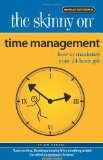
Author: Jim Randel
Publisher: Rand Media
Genre: Self-improvement
ISBN: 978-0-9841393-9-2
Pages: 134
Price: $14.95
Author’s website
Buy it at Amazon
According to Jim Randel, “time management is the application of strategies and techniques to help you use your time as effectively as possible.” Randel doesn’t believe in wasting our time with this book, either, and presents it in a simple, streamlined format that should take only about an hour to read.
First Randel asks the reader to evaluate how he’s currently spending his time. We all waste time in some way, and identifying where we can capture an hour or two can really help us accomplish more. Then we need to clearly define our goals, so we can be sure we reach them. The remaining sections offer insights on ways we can overcome procrastination and inertia, and work more effectively and efficiently.
Skinny On books are presented in a power point style with stick figures and captions, but they’re not comic books. Instead, Randel captures the most important points on a topic and presents them with a minimum of fluff. Further reading is encouraged, and an extensive list of recommended books is provided. If you’re looking to do more with your time, you’d be wise to pick up this book.
Reviewer: Alice Berger








 In a recent post, Steve Pavlina wrote, “The path of abundance isn’t the path that maximizes velocity. It’s the path that minimizes friction. If you try to maximize velocity, you end up maximizing friction too, thereby causing massive amounts of heat. Ultimately, you burn up.”
In a recent post, Steve Pavlina wrote, “The path of abundance isn’t the path that maximizes velocity. It’s the path that minimizes friction. If you try to maximize velocity, you end up maximizing friction too, thereby causing massive amounts of heat. Ultimately, you burn up.”
This really resonated with me. For the longest time, I chose options in my life that would require me to earn more money. I added expensive daycare, personal training, and more, and chose to live in an expensive area of the country. So I spent a lot of energy hustling for new work, coming up with new projects, and marketing my offerings. It was burning me out, big time.
Then I started making changes.
As I mentioned in a post last year, I went from working all kinds of hours to working under 20 hours per week, but still earned a full-time income. That’s because I learned to write efficiently and eliminate some of the worst distractions that made it feel like I was working all day when I was really surfing the Internet, checking e-mail, or otherwise spending pointless time at the computer.
Later, I cut expenses at the suggestion of my life coach. I ditched the daycare, cut out personal training (which I later added back when I injured my shoulder and needed help getting back into a workout routine), got rid of cable, and more. I ended up saving about $1,300 per month. Talk about eliminating friction! And just last week, we moved from New Hampshire (expensive) to North Carolina (less so), saving about $400 per month on mortgage/rent alone. My parents care for our toddler during the day so we can work without having to shell out for pricey daycare.
In his post, Pavlina also talks about eliminating friction by playing the game of life for a draw, not a win. When you play to win, others must lose, and they’ll do what they can to keep you from prevailing. But if you play for a draw, you’ll confuse your opponents because they’ll have nothing to block. I realized that that’s something I’ve been doing. In my courses and mentoring, I strive to give value that goes well beyond what the students are paying for. If someone needs to drop out of a course because of a change in their life situation, I offer to move them to a later session for free, or, if their situation is dire, give them a full refund even if I’ve already spent substantial time helping them. On the blog, my M.O. has always been to give away valuable information and ask for nothing in return, though I do occasionally use the blog to market my offerings.
As a result, I’ve been having writers banging down my door to ask for mentoring, e-courses, query critiques, and e-books. I decided to take two weeks off to settle in here in North Carolina, and within the first few days I had three writers write to ask when I’ll be back at work so I can mentor them or critique their queries. Several editors have asked me to let them know when I’m back in action so they can assign me stories. Again: Talk about friction-free! I don’t feel like I’m struggling to get something from people. I just give and the people show up. If I strained to market to people, cut corners with my assignments, and generally tried get more value than I’m giving, people would oppose me because for me to win, they must lose. When I give more than I expect, there’s nothing to oppose.
So: What can you do to eliminate the friction in your writing life? [lf]

Author: Jim Randel
Publisher: Rand Media
Genre: Self-Improvement
ISBN: 978-0-9818935-3-2
Pages: 144
Price: $14.95
Author’s website
Buy it at Amazon
Everyone has made a New Year’s resolution at one time or another. But usually by the middle of January, our goal has been forgotten, as we run into problems maintaining our willpower. If we really want to achieve this goal, we will want to press on, but if it’s not that important to us, we may let it go until the new year rolls around again.
In this Skinny, Jim Randel explains how we can develop our willpower and learn to stay the course, even when the going gets rough. Using the fictional stick-couple, Billy and Beth, he shows us how these folks make a decision to do something, and then proceed to achieve it.
If we never ran into roadblocks, we wouldn’t need willpower. Both Billy and Beth have to overcome obstacles of fear, inertia, doing too much too quickly, and deciding how important their goals are to them. Randel provides a 15-point plan to improve willpower and self-discipline, as we work toward our own goals. And a helpful bibliography of additional works on this subject is also provided. Once again, Randel has presented a wealth of information in a quick and fun read that can guide us for a lifetime.
Reviewer: Alice Berger








 I’ve read some great posts on my favorite writing and personal development blogs lately, and I thought I’d share them with you. Enjoy!
I’ve read some great posts on my favorite writing and personal development blogs lately, and I thought I’d share them with you. Enjoy!
1. Instead of working from a business plan or a to-do list, Jennifer Lawler chooses themes, and she writes about this in Working in Themes on her Finding Your Voice blog. For example, one month may be novel month, the next month she’ll work on her screenplay. This tactic can work great for freelancers who have so many projects on the go that they can’t decide which one to work on at any given time — so they work on nothing.
2. On Carol Tice’s Make a Living Writing blog, guest poster Michelle Rafter writes An Editor Reveals 7 Secrets Every Writer Needs to Know. For example: Editors like talking to writers on the phone. (See, told ya!)
3. I love this post from Sage Cohen of the Path of Possibility blog: The Death of the Dream Could Be the Birth of Unprecedented Possibility. She writes, “What I have found to be true in every case––in my personal life and my writing life––is that the death of the dream creates the space for what is actually intended to come through: what is, in the end, a better fit than we ever could have imagined.”
4. On The Urban Muse blog, Susan Johnston tells writers about Making the Mental Shift from Employee to Freelancer. Think $30 per hour is an extravagant sum because that’s what you made at your last salaried job? Think again.
5. In Why I’ve Never Missed a Deadline — And How You Can Do the Same on the Dollars and Deadlines blog, Kelly James-Enger advises writers to estimate how long an article will take to research and write, and then build in a time cushion just to be sure they can meet their deadline.
6. Do you tend to get to 90% complete on a project — like writing a query — and then give up? In Completing Projects on the Steve Pavlina blog, Steve urges you to listen to your higher self and push yourself to finish what you start.

Author: Jim Randel
Publisher: Rand Media
Genre: Personal growth
ISBN: 978-0-9844418-7-8
Pages: 288
Price: $19.95
Author’s website
Buy it at Amazon
Let’s face it – the diploma will get you off to a great start, but college most likely hasn’t provided you with all the information you’ll need to succeed in life. That’s why there have been so many good books written over the years on this subject. So if you don’t have the time to read them all, Jim Randel has summarized their main points in Street Smarts, a Skinny book on the rest of the important stuff they left out in college.
This unique summary provides snippets of information on the following topics: Seeing yourself as a marketable company, Communication skills, Career advancement and networking, Time management and productivity, Sales and persuasion techniques, Financial literacy, Savvy, Investing, and Personal development.
As with all the Skinny books, a comprehensive bibliography is provided on the topics covered. If a particular idea strikes you and you want to learn more, you’ll know exactly what books to check out. Old-school masters like Dale Carnegie, Napoleon Hill and Brian Tracy are featured, as well as new and hip author, Ramit Sethi.
You’ve spent four years mastering your subject matter and you’re ready to face the real world. Now you have the rest of your life to develop yourself. Read through these 125 suggestions and explore the bibliography. Your life is waiting for you, and you want to be prepared. Now go out there and be successful!
Reviewer: Alice Berger








0 Comments on
Street Smarts: Beyond the Diploma as of 1/1/1900
 It all started with a bowlful of marbles.
It all started with a bowlful of marbles.





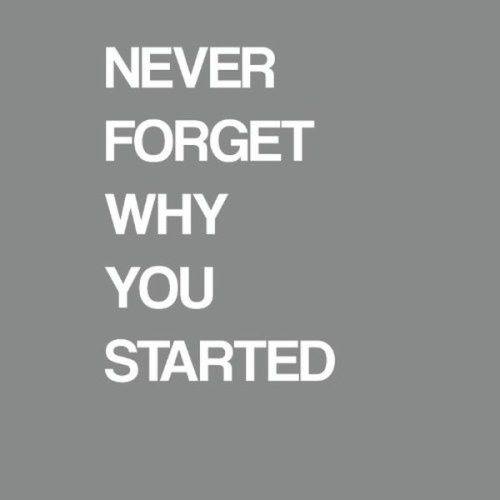
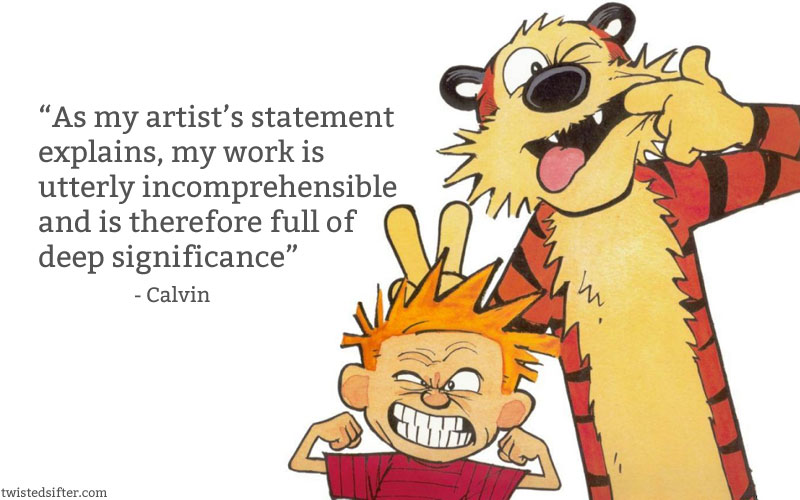

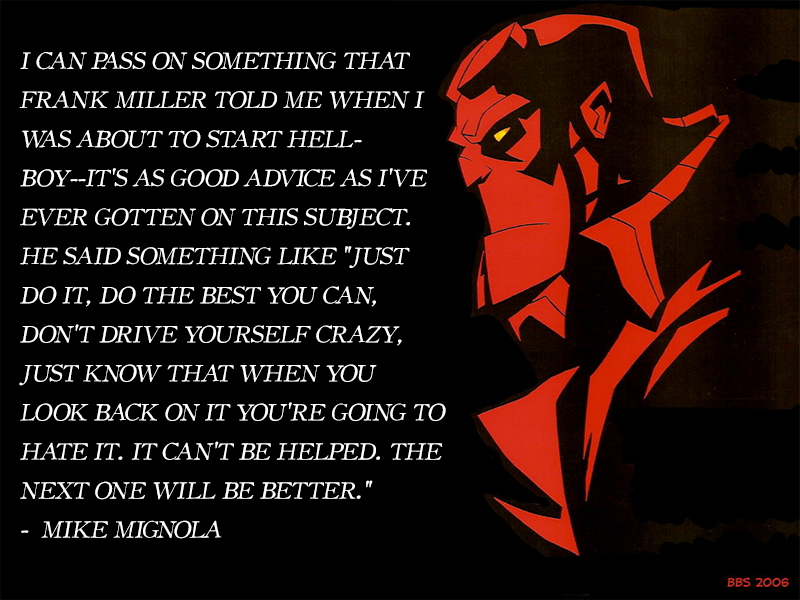
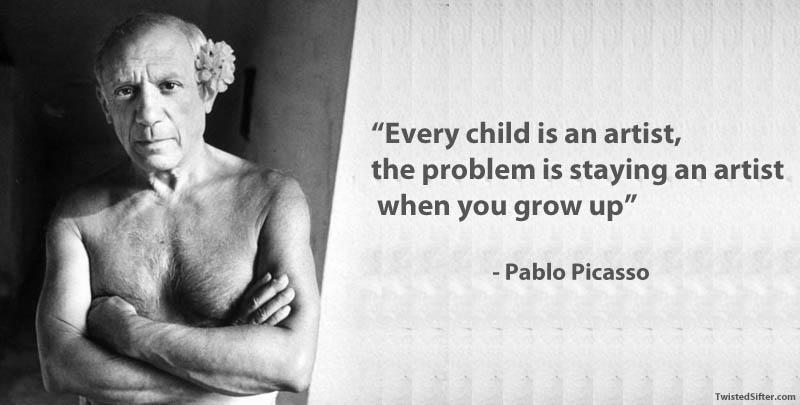
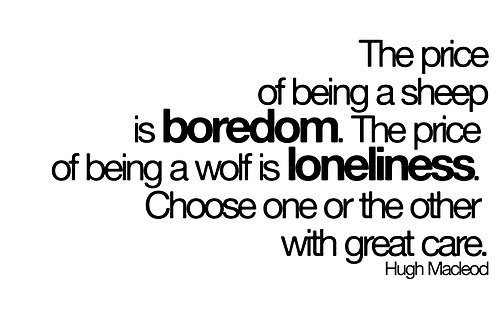


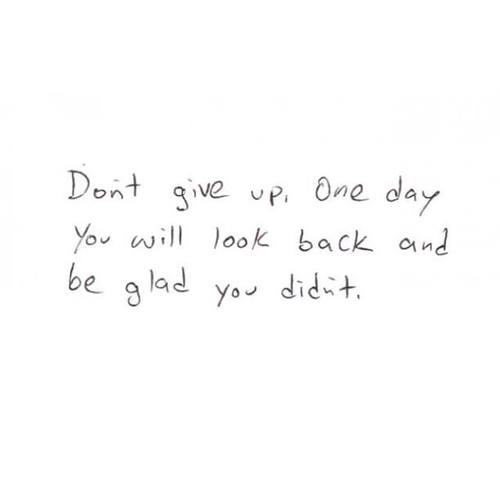
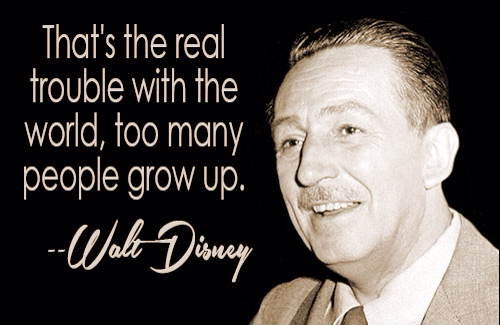

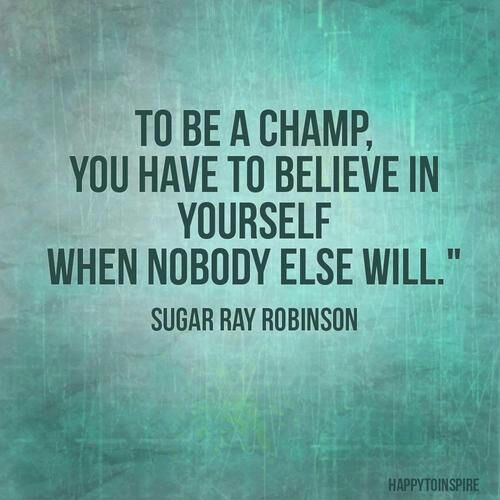
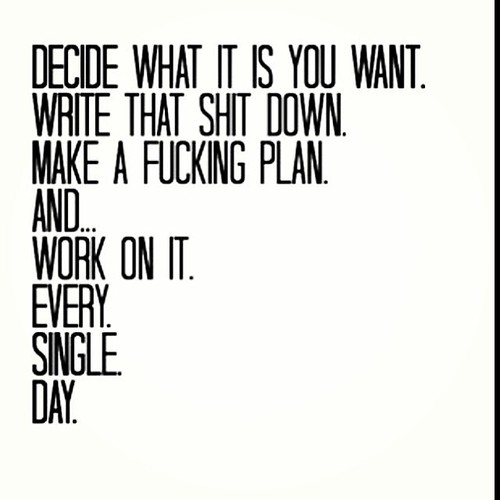
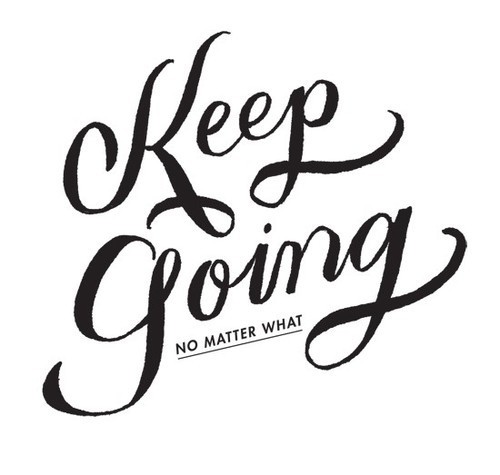
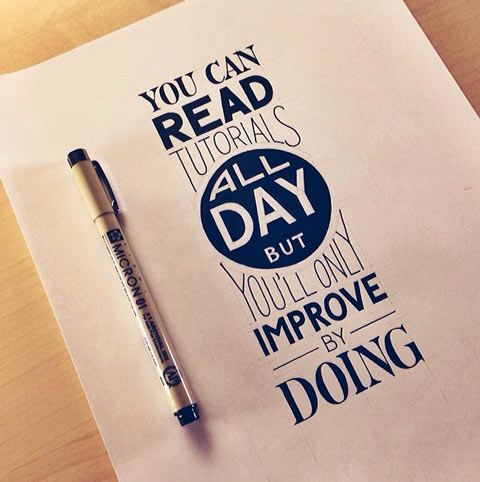


















 0 Comments on Street Smarts: Beyond the Diploma as of 1/1/1900
0 Comments on Street Smarts: Beyond the Diploma as of 1/1/1900

